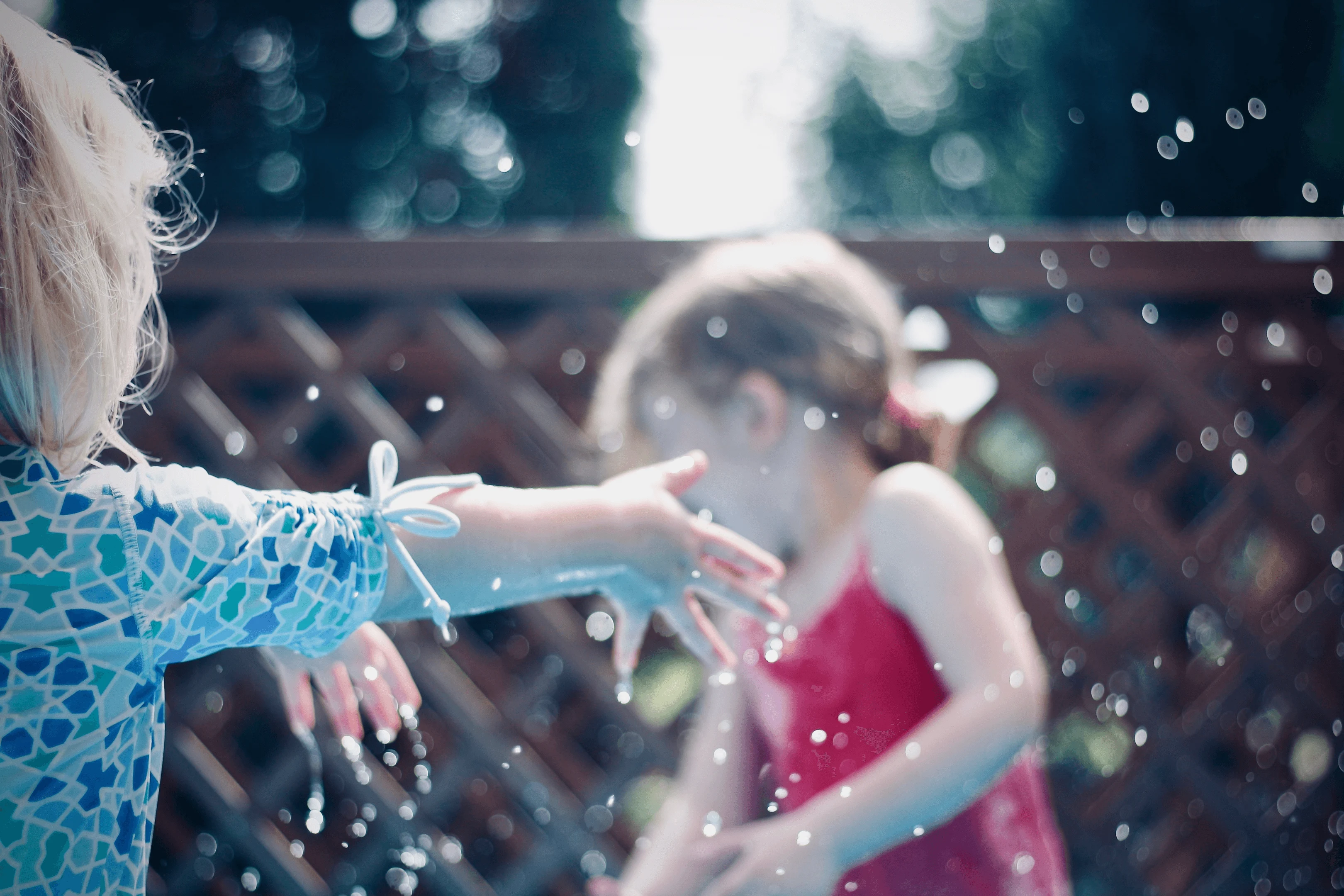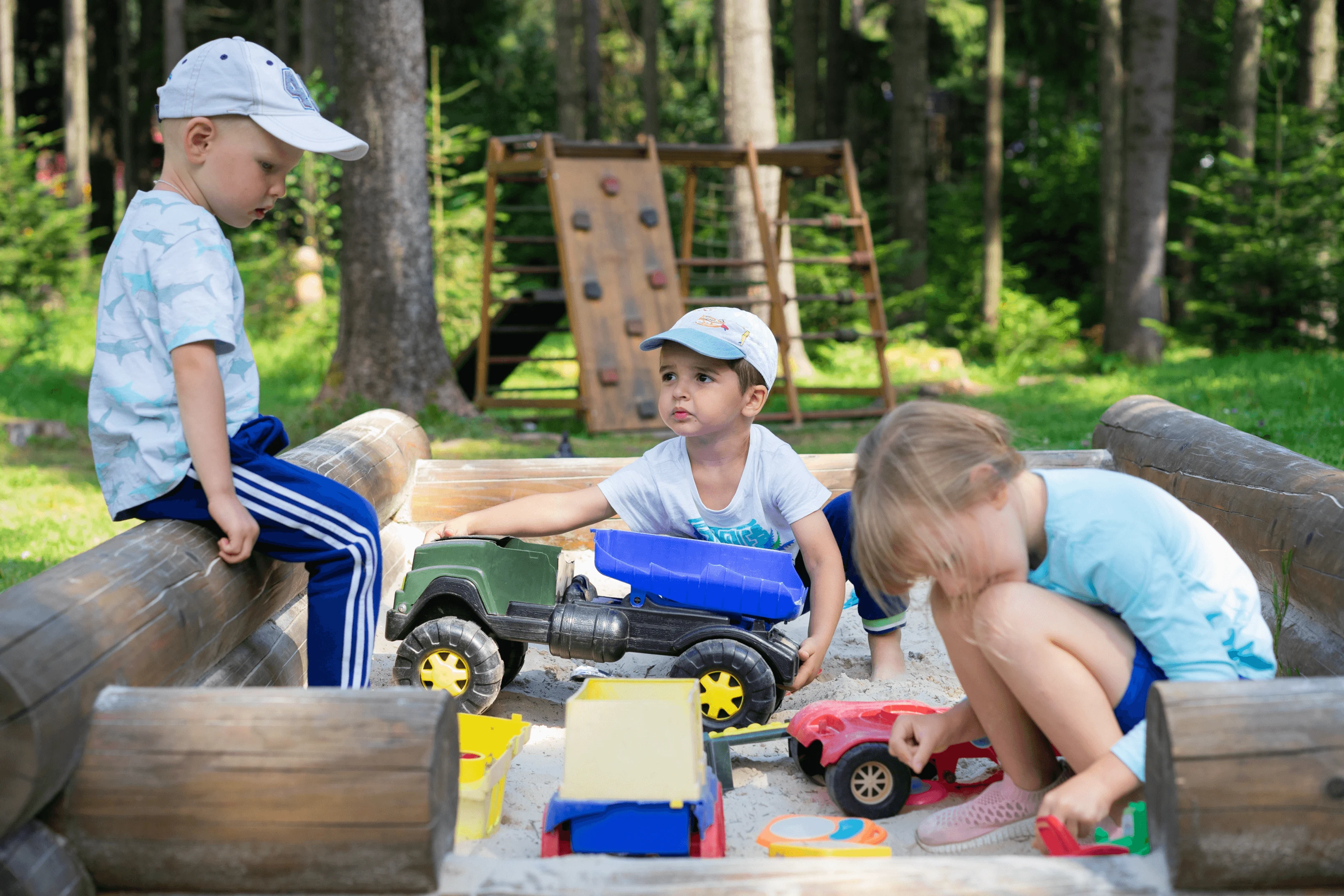
Firstly, What is a Schema?
Put simply, a schema is a pattern of repeated behavior, usually seen in children up to five or six years old. Recent research suggests that some schemas may even continue a lot longer, possibly into adulthood. Generally, though, we associate schemas with typical childhood development in the early years.
The early years are a time when everything is new and exciting to your child, and they are building new connections in their brain at a faster rate than they will at any other time in their life. To be able to strengthen and secure those new brain connections, young children need to repeat actions many times until eventually, the connection between their synapses is permanent.
Think about the number of times you need to practice riding a bike before you can eventually stay on without support. Each time you try, the connections get a little stronger until you can finally do it without help. And the neural pathway for bike riding is permanent, meaning you will remember how to ride a bike for the rest of your life. This is sometimes referred to as myelination.
What Kinds of Behavior Do Children Repeat?
This is a time when you may see your toddler repeatedly tip up their toys. They may drop their spoon from their high chair over and over again as they process how gravity works. They may look through their legs or hang upside down from the sofa as they learn about angles and try to understand their sense of place in the world. You may notice them line up toys as they learn about the positioning of objects or they may enjoy wrapping items up, including themselves, as they learn how objects can be enveloped.
Some children will enjoy movement and will want to be picked up and held high in the air, or swung between two adults’ hands. They are learning about their position in relation to other objects, trajectory and angles. They may like to feel the push and pull of the force of energy as they play.
You may notice your child showing an acute interest in toy cars or wheeled toys, or they may have a sudden fascination with anything that spins. Watching water flow as it is poured can also be endlessly interesting to some children.
How Can I Recognize Trajectory Schema?
You may notice your child starts throwing things or launching toys. This is a phase that most toddlers and younger children pass through and is sometimes referred to as casting.
Children passing through the trajectory schema will usually have an interest in how objects and people move. They enjoy watching moving objects, and they may start to drop objects because they simply want to see how they fall.
They may also start to jump, swing or climb up and down repeatedly as they test how their own body can move.
Don’t be afraid to give your child boundaries to keep them safe, but do try to provide opportunities for them to practice and repeat throwing and climbing behaviors and other trajectory schemas safely. By repeating these behaviors, children learn to process early concepts linked to speed, angle, height, weight, distance, gravity, and flow, to name a few.
To develop your child’s understanding, comment on their play with words like:
fly
spin
float
glide
up and down
fast and slow
take-off and land
Think of our early-year pilots, pioneers, engineers, or physicists!
Why Do Children Repeat These Behaviors?

Your toddler is learning all about the world around them. We take so much for granted as adults that we can forget that everything is new to a toddler. Gravity, for example, is something adults don’t even think about, but for a one-year-old, it’s a great life experiment. How exciting that when you drop something, it falls to the floor! Wow! It’s so amazing that they want to repeat dropping items to see if it happens again….and again……and again!
Some children may move through this trajectory schema phase quickly. But if we prevent children from learning by stopping them every time they drop or tip objects, we may only be delaying this phase. That is because unless they have opportunities to repeat these behaviors, new concepts, such as gravity, will not be processed and your child will keep trying to practice to make sense of it.
What are the Main Schemas?
There are many different schemas, but the most common ones are:
Trajectory schema
an interest in dropping, throwing or tipping things up.
Rotation schema
an interest in everything that spins including spinning yourself around.
Enclosing schema
an interest in enclosing things, sometimes by using borders.
Enveloping schema
just like being inside an envelope – this is an interest in being completely enveloped.
Transporting schema
a need to move objects from one area to another in various ways.
Connecting schema
an interest in joining things together.
Positioning schema
an interest in the position of objects for example lines or groups of objects.
Orientation schema
an interest in the place and position of objects or your own body.
Are Schemas Linked to Autism?
Not necessarily. As you can see, all children will go through some play schemas as they grow and learn about the world around them. If you spot the signs of schemas in young children, it is usually a good sign. Your child is curious about their world. They are trying to make sense of things. They are using early problem-solving skills to work out how the world around them operates.
Schematic play in itself is not an indicator of autism.
How Can We Help?

We can help them learn by putting lots of playful opportunities in their path.
If your child is interested in transporting, for example, follow their interest by providing lots of bags, baskets, trolleys, purses, rucksacks, and cases for them to transport objects in.
If your child is showing an interest in being enveloped, show them how to swaddle dolls in blankets, give them scarves or large pieces of material to wrap up objects, or playfully wrap them up or swaddle them.
Schemas are a natural part of child development, and all children will display some elements of play schema at some point in their development, but schemas in themselves do not mean a child is autistic.
For more information on schemas and activities you can provide to support them, visit this link.
How Long Should Children Stay in a Particular Schema?
That is a bit like asking how long a piece of string is. Children are individuals and develop at different rates, depending on their genetics and their life opportunities. Some children pass through the most common schemas fairly quickly; others take much longer.
Understanding that play schemas are part of typical child development may help reassure you about some of the signs you see in your child’s play. However, some children may have schematic play that goes on for much longer than we would expect. Again, this does not necessarily mean that your child has autism. They may not have had the opportunities to practice and repeat behaviors, so they may need to go back and revisit some play schema opportunities.
After the pandemic, I worked with a child who experienced a long, severe lockdown due to the medical needs of his family, and he had very limited opportunities to play outdoors. When he started in nursery, he was still showing many signs of play schemas, such as spinning toys, tipping up toys, and dropping objects. Yet, after a term, with lots of outdoor time where he could climb and roll freely, experience a wide selection of toys that he could practice spinning, and plenty of safe opportunities to drop and throw softballs and beanbags, this phase of repeated behaviors gradually passed.
Understanding Autism

Autism presents differently in different people, and no two autistic children are the same. However, if you have considered the information above and are still concerned that your child may have autism, there are many clues to be aware of in the early years. Look out for the following signs:
Does not respond to their own name in repeated contexts.
Struggles to make eye contact with familiar and unfamiliar adults and children.
Limited facial expressions, for example, not smiling back when you smile.
Delayed speech and delayed understanding of language.
Following their own agenda and cannot be easily distracted.
Hyper-focused on certain things.
Rigid about routines and becomes distressed when change happens.
Fussy around their food.
Little awareness of other children playing around them.
Highly sensitive to certain smells, noises, tastes, or textures.
Repetitive movements like flapping their hands or head banging when excited, upset or overstimulated
This is by no means an exhaustive list, and it should never be used to diagnose your child. It is also worth pointing out that recent research shows that girls can mask a lot of these signs, even from a very early age.
If you are concerned, you should always visit your doctor or health visitor to talk about your child’s development.
Autism or Trajectory Schema?
Schematic behaviors in themselves, including the trajectory schema, do not mean your child has autism.
However, some children will continue to show repeated patterns of behavior, even though they have had rich opportunities to practice and repeat schematic behaviors throughout their early years.
Children who have been diagnosed with autism spectrum disorder can find comfort in schematic play; for example, lining up objects, repeatedly pouring water, spinning objects, or enveloping themselves can help to soothe, calm, and bring them comfort. Some autistic children may feel safer when they squeeze themselves into a small space and become enclosed, as part of the enclosure schema, or are weighted down with a heavy backpack or weighted cushion.
In fact, play schema can be used in a very positive way for children with autism spectrum disorder. However, it is important to remember that each child is an individual, and even if they have a diagnosis, not all autistic children will respond to the same strategies.
Safety First
Keeping our children safe should always be our priority, and toddlers are just developing their awareness of danger, so they don’t always recognize risks. If your child is repeating an unsafe behavior pattern, try to distract them until you can safely provide similar opportunities.
For example, if your child is throwing or casting objects, explain to them that they should not throw stones because they could hurt someone. Instead, give them items that they can practice throwing safely, for example:
A bat and balloons
Softballs
Bubbles to pop
Skittles made out of recycled plastic bottles and a ball
Reframing the Way We View Behavior
As adults, we need to understand that children are compelled to repeat some of these actions. It’s in their DNA, and young children are “programmed” to learn through repeated actions until they process the concepts that help them make sense of their world.
Some days, it might feel as though your toddler is constantly throwing toys or jumping off things, putting themselves at risk. They may seem fixated on this and become angry if we try to stop their play.
Our natural inclination can be to stop play schemas and make life as safe as possible, but children need to learn.
Schematic play is part of each child’s natural development, and although we need to keep our children safe, we also need to allow them opportunities to explore their world and learn about how things work so that we don’t limit our next Marie Curie or Albert Einstein.
For further information and support on autism, visit this link.
